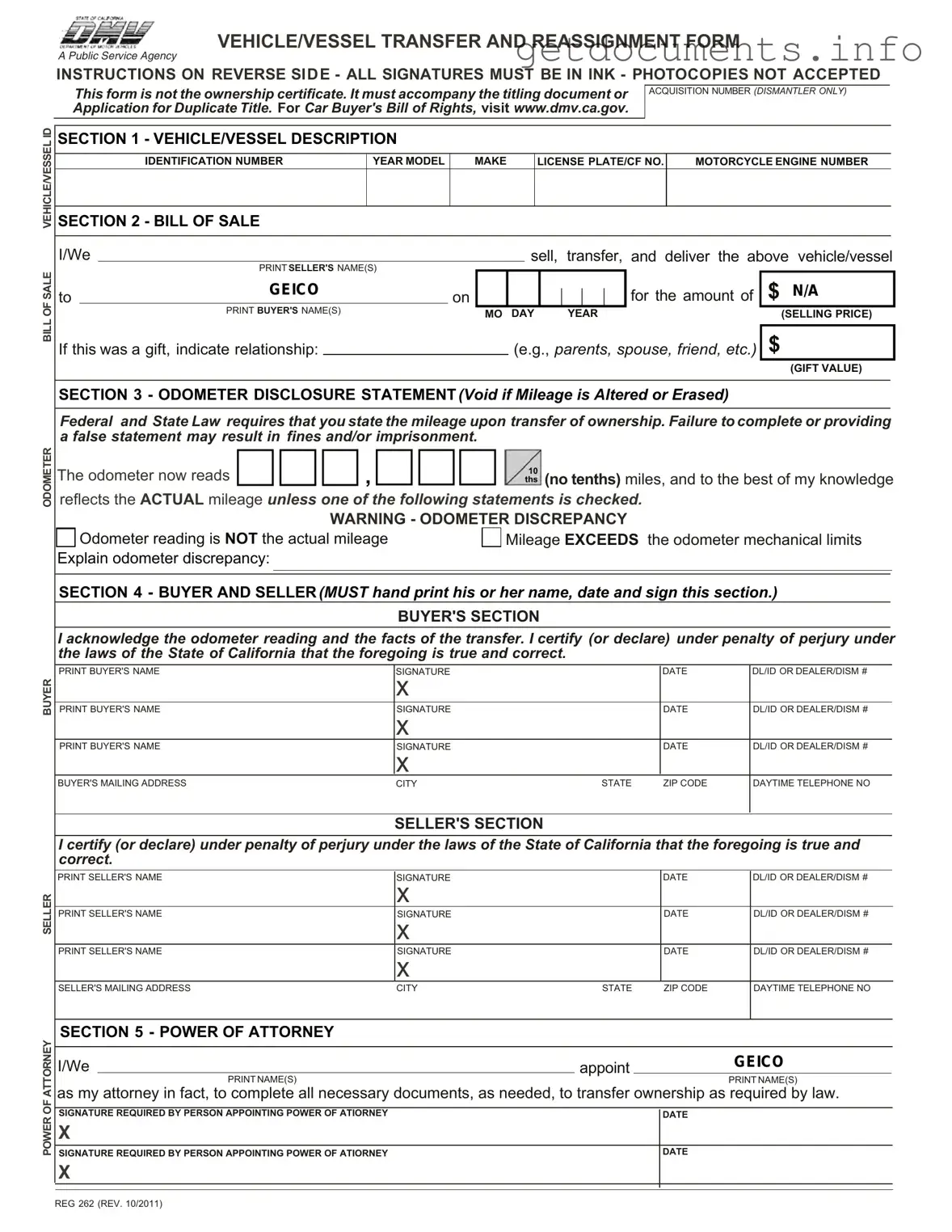The California Form REG 262, also known as the Vehicle/Vessel Transfer and Reassignment Form, is a critical document in the process of transferring ownership of a vehicle or vessel in the state. This form serves several important functions, ensuring that both buyers and sellers are protected during the transaction. It is essential to understand that this form is not the ownership certificate; instead, it must accompany the title or an application for a duplicate title. The REG 262 includes sections that require detailed information about the vehicle or vessel, including its identification number, year, make, and model. Additionally, it features a bill of sale section where sellers must identify the buyer, the sale price, or the value of a gift, along with the date of the transaction. A crucial part of this form is the odometer disclosure statement, which mandates that sellers disclose the vehicle’s mileage at the time of sale. This section is particularly important, as any alterations to the reported mileage can void the disclosure and lead to legal repercussions. Furthermore, the form includes sections for both the buyer and seller to provide their names, signatures, and contact information, solidifying their acknowledgment of the transaction. Lastly, if needed, a power of attorney section allows individuals to appoint someone else to act on their behalf in completing necessary paperwork for the transfer. Understanding the nuances of the REG 262 form is vital for anyone involved in buying or selling a vehicle or vessel in California.
